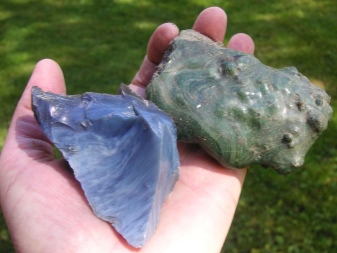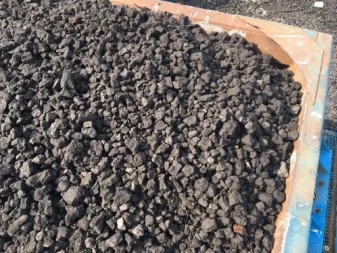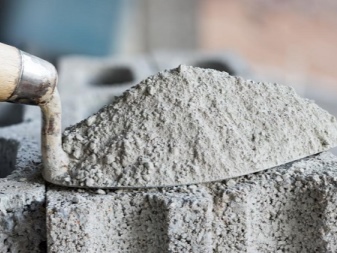What is slag and where is it used?

Slag is secondary raw materials obtained from the waste of the metallurgical industry. It is being formed from coal ash and a by-product of metal smelting. This material is widely used in construction. Let us dwell in more detail on the features of the slag and its technical and operational characteristics.


What it is?
The basic advantage of using recyclable materials is a waste-free technology for the manufacture of building materials. It allows you to significantly reduce the level of environmental pollution. Due to the increased density and resistance parameters of the material when working with cinder blocks, the volume of construction waste accumulated during the construction of a building is greatly reduced. At the same time, slags of all types retain their lightness and ability to transport.
Slag is a group of synthetic silicates formed on metal surfaces during the process:
- casting of metal raw materials;
- processing of liquid alloys;
- obtaining raw materials from fluxes;
- ore recovery.


Composition and properties
Depending on the characteristics of the chemical composition, the following groups of slags are distinguished.
Basic (based on CaO, MgO and FeO):
- oxides - up to 55%;
- alumina - within 15%.
Acidic (SiO2, TiO2):
- oxides - up to 45%;
- alumina - within 20%.
Neutral (Ai2O3, ZnO):
- oxides - up to 47%.


Any slag contains aluminum, magnesium, as well as manganese, silicon, sulfur and some other elements.... Depending on the structure of the working components and the concentration of active substances, slags receive various custom characteristics. These raw materials can have various shades - from light gray to deep black, purple and even pearlescent colors can also be found on the market. All these varieties are in demand in the production of blocks, the preparation of concrete mortar and the execution of the foundation pouring.
The texture of the slags is also different. She may be stone-like, porcelain-like, and also vitreous - it depends on the chemical structure of the recyclable material. Slag melting points range from 360 to 450 ° C. The specific gravity is approximately 2.7 units.
Slags of all types are characterized by high thermal insulation properties and wear resistance.


Advantages and disadvantages
Like any other building material, slags have their pros and cons. Speaking of the benefits, the following can be highlighted:
- high fire resistance - slag does not ignite and does not support combustion;
- long operational period - the term of use of such material is 50 years;
- variety of physical and technical properties depending on the composition of the main components of raw materials;
- democratic cost compared to stone, brick and wood;
- ease of installation.
However, consumers also highlight the disadvantages of such raw materials:
- hygroscopicity - slag is not suitable for work in areas with frequent precipitation, floods and in conditions of high humidity;
- super strength - it hinders the implementation of engineering communications, making the process time-consuming and, accordingly, costly;
- increased thermal conductivity.
In addition, the concentration of sulfur and acids in the slags exceeds the norm. Moreover, the complete weathering of all toxic elements occurs only after a year.


The weight
Slag is a bulky material, its specific gravity corresponds to 2.6-3.7 grams per 1 m3. Approximately the same parameters are typical for natural varieties of stones. The specific gravity of raw materials varies depending on the type of slag:
- for cinder block - 2-2.5 t / m3;
- for lump slag - 2.1-2.9 t / m3;
- for recyclable materials in the form of crushed stone - 1.1-1.2 t / m3.


Views
Metallurgical
Metallurgical slag becomes a by-product of any metallurgical production. There are three main types of such raw materials.
- Granulated - this slag is formed during the cooling of the cast iron. It has found its application as a budget analogue of mineral building additives.
- Non-granular - slag is produced by air cooling of metallurgical waste, their further crushing and screening. This material is in demand as a filler for asphalt concrete in road construction. In addition, non-granulated raw materials are in demand in agriculture in cases where soil deoxidation is required.
- Slag pumice - this raw material has no binding characteristics, therefore it is used mainly as a sound-proof or heat-insulating material. It is often used when creating blocks from lightweight porous concrete.



Metallurgical slags are blast-furnace, steel-smelting, and open-hearth.
- Blast-furnace raw materials have received the maximum distribution; they are obtained during the production of pig iron. From 1.6-2 tons of ore during processing, 1 ton of pig iron and about 0.5-0.8 tons of slag are formed.
- In steel-making furnaces, 2-2.4 tons of ore, 2 tons of fuel and 80 tons of water yield 1 ton of steel and 0.2-0.3 tons of slag.
- In cupola furnaces, as well as in electric furnaces, the output of the slag product is 0.2-0.3 tons per 1 ton of metal.

Less commonly, non-ferrous metallurgy waste is used in the construction industry. The manufacture of such metals is in itself an expensive and very labor-intensive process. To obtain only 1 ton of copper or nickel, it is necessary to process 200 tons of natural ore, therefore, the volume of slag in the production of 1 ton of such metal often reaches 20-25 tons. This is due to the fact that in the natural environment, non-ferrous metals are found exclusively in the form of compounds that dispersed in rocks.
Usually, the presence of metal oxides in them does not exceed 4-5%, everything else is just rock elements (carbonates, silicates, quartz). Such raw materials are black and do not disintegrate, their density varies from 3300 to 3800 kg per 1 cubic meter. The water absorption parameter is 0.1-0.6%.
Slags of this type are used for the manufacture of mineral wool or cast products; for the production of building materials are used extremely rarely.


Phosphoric
During the production of phosphorus by the electrothermal method, granular slags are formed. They contain up to 98% glass, the basis of such a material is SiO2 and CaO... In addition, it contains particles of fabric, crumb rubber, paper and polymer materials. The composition may also include by-products of oil refining and other additives - this significantly limits the scope of application of such slags in the construction industry, although it can be used if you need to insulate the structure.


Ash
Usually, fuel is burned in chambers, in which the heating can reach 1300-1700 degrees. In such conditions, conglomerate compounds formed from the mineral part of the raw material are released in the form of a pulverized mass. Small particles no more than 100 microns in size, the content of which in the ash reaches 80%, together with the flue gases are carried away from the furnaces and form fly ash. More massive particles settle and melt, acquiring a glassy or lumpy form - this is ash and slag.
The percentage ratio between such raw materials and fly ash directly depends on the manufacturing technology. For example, in furnaces with a solid method of ash removal, up to 20% of all ash goes into the slag. In furnaces where liquid slag removal systems are provided, up to 45% is transformed into slag. In cyclone units, the formation of slag is 80-90% of the total amount of ash.Ash slag is also called coal and coal. These days, they are in widespread demand in the industrial field. Such raw material differs from blast-furnace by a reduced proportion of calcium oxide and an increased concentration of iron oxide.
In addition, coal slag is highly alkaline.


Ash and slag is a black granular recyclable material. This color is due to the presence of ferrous iron in the composition of the raw material. Less commonly found in white, olive, green and brown. The shade depends on the concentration of oxides; when grinding such slag, gray sand is obtained. Ash and slag are the result of combustion of different types of fuels:
- coal contains from 5 to 40% slag;
- in brown coal, the concentration of slags is about 15%;
- in anthracite - up to 35%;
- in wood - up to 1.5%;
- in fuel oil - no more than 0.3%;
- in oil shale - from 50 to 80%.
Important: there are radioactive components in coal slag, so it has a limited scope. Its use as a filler for wall blocks and the arrangement of screed for housing objects is unacceptable.


Where is it used?
The scope of use of slags is quite wide:
- production of heavy concrete with strength category B15-B30;
- preparation of building mixtures;
- production of floor slabs, concrete panels, columns, as well as beams, girders and other supporting structures, including prestressed ones;
- industrial and residential monolithic construction;
- production of curb stones, paving stones, as well as paving slabs;
- all types of low-rise construction (construction of garages, cellars and outbuildings).


Slag cement has received widespread use; it is formed when crushed slag is combined with cement. This material is recognized as one of the most durable and reliable in the construction industry.
- Slag concrete is widely used in the manufacture of floor slabs for multi-storey buildings. This is due to the fact that the increased level of reliability of such material determines the durability of the floors, which is especially important in the construction of residential structures.
- A mixture of crushed slag and cement is in demand in the construction of foundations... The use of such raw materials is justified in cases where the walls and roofs in houses are built from lightweight building materials - such a foundation will become the fundamental support of the entire building.
- Slag cement is in demand for reinforcing belts in multi-storey housing construction. The material is used to reinforce individual engineering modules.
- The composition based on cement and slag is in demand in the manufacture of near-water and underwater structures... Such structures are exposed to moisture, and slag concrete successfully withstands such a negative impact.
- The mixture is used in some types of thermal insulation of residential and industrial buildings.... Its use is especially effective together with heaters - their tandem protects against the penetration of cold air masses.
The greatest effect is achieved when using functional plaster, it simultaneously removes defects and makes the wall more aesthetic. Slag concrete is used to insulate the ceiling, roof or sauna outside.







The comment was sent successfully.